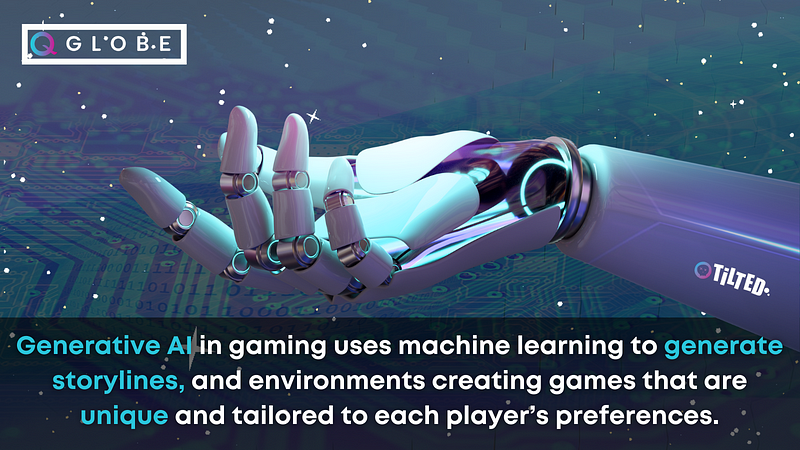The rise of generative AI has opened up new avenues for the gaming industry, revolutionising the way games are designed, developed, and played. In this blog post, we will explore the past, present, and future of generative AI in gaming and what it means for social commerce.

Past: Procedural Generation
Procedural generation has been around for decades, with early examples appearing in games like Rogue and Elite. Procedural generation involves using algorithms to create game content on the fly, rather than relying on hand-crafted content. This approach can lead to games with almost endless replay-ability, as the game world is different each time you play.
One of the most well-known examples of procedural generation in recent years is Minecraft, which uses algorithms to create a vast, open-world game world. The game has sold over 200 million copies, and the procedural generation is a big reason why it remains so popular.
Present:
Generative Adversarial Networks, or GANs, are a type of deep learning model that can generate new content based on existing data. In the gaming industry, GANs are being used to create new game assets, such as character models and environments.
One example of GANs in action is NVIDIA’s StyleGAN2, which can generate realistic human faces. This technology could be used in games to create unique and personalised characters that look like real people. Other examples of Generative AI in gaming include:
- Endless Entertainment Endless Entertainment is a game development studio that specializes in creating AI-generated content for games. They have developed several games that use generative AI, including “Dungeon Alchemist,” a game that generates unique dungeons for players to explore. The game uses machine learning to analyze the player’s preferences and generate dungeons that are tailored to their playstyle. Endless Entertainment has also developed “Galactagirl,” a space-themed shooter game that uses AI to generate enemies and weapons.
- AI Dungeon AI Dungeon is an online game that uses OpenAI’s GPT-3 language model to generate game content. The game allows players to enter any scenario they can imagine, and the AI generates a unique story based on their input. AI Dungeon has been praised for its ability to create engaging and immersive stories that are different every time you play.
- Vamify is a startup that is using generative AI to create video game content. They have developed a tool called “Vamify Magic Room,” which uses AI to generate game environments and assets. The tool allows game developers to quickly create high-quality game content without the need for a large team of artists and designers. Vamify is also working on using AI to generate game mechanics and storylines, with the goal of creating fully AI-generated games in the future.
Future: AI-Generated Games
The ultimate goal of generative AI in gaming is to create entire games using AI. This would involve using machine learning to generate game mechanics, storylines, and environments. The result would be games that are unique, unpredictable, and tailored to each player’s preferences.
Some companies are already working on AI-generated games. For example, OpenAI’s GPT-3 language model has been used to create simple text-based games. While these games are still basic, they demonstrate the potential of generative AI in gaming.
What it means for Social Commerce
Generative AI has the potential to transform social commerce by creating personalised experiences for each customer. Imagine a game where each player’s experience is unique, with game mechanics, storylines, and environments tailored to their preferences. This type of personalised experience could be extended to social commerce, with products and services tailored to each customer’s needs. QGlobe is heavily involved in Social Commerce and is actively on the hunt to integrate new emerging technologies in its new social commerce app called “Tilted.
